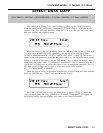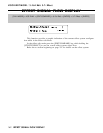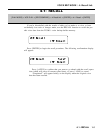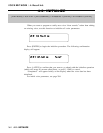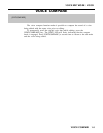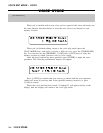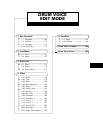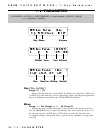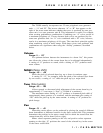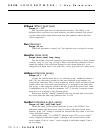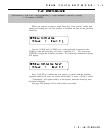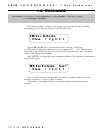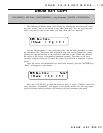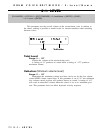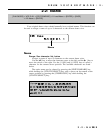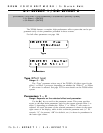
169
DRUM VOICE EDIT M ODE / 1: Key Param eter
1-1: PA RA M ETER
The TG500 actually incorporates two 32-note polyphonic tone generator
units — “A” and “B”. The inverse character “A” or “B” that appears to the
right of the wave name indicates whether that wave is produced by tone gen-
erator unit A or tone generator unit B. This information is useful, for example,
when creating performance combinations. Combining two “A” voices results in
a maximum polyphony of 32 notes because both voices are produced by the
same tone generator unit. An “A” voice combined with a “B” voice, however,
results in a maximum polyphony of 64 notes. The same basic principle applies
when combining voices in multi setups. With drum voices, tone generator unit
combinations are significant when using the “AltGrp” parameter, described
below.
Volume
Range: 0 … 127
For optimum balance between the instruments in a drum “kit,” this param-
eter allows the volume of the current drum key to be adjusted independently.
A setting of “0” produces no sound, while a setting of “127” produces maxi-
mum volume.
NtShft (Note shift)
Range: -48 … +36
Shifts the pitch of selected drum key up or down in semitone steps.
A setting of “-12,” for example, shifts the pitch of the selected layer down
by one octave; a setting of “+4” shifts the pitch up by a major third.
Tune (Fine tuning)
Range: -63 … +63
Allows upward or downward pitch adjustment of the current drum key in
approximately 1.7-cent steps (a “cent” is 1/100th of a semitone).
The maximum minus setting of “-63” produces a downward pitch shift of
approximately three quarters of a semitone, and the maximum plus setting of
“+63” shifts the pitch up by the same amount. A setting of “0” produces no
pitch change.
Pan
Range: -31 … +31
Interesting stereo effects can be produced by placing the sound of different
drum instruments at different locations in the stereo sound field. This parameter
determines the position in the stereo sound field in which the sound from the
current drum key will be heard (left to right).
Minus values represent panning to the left, and positive values represent
panning to the right. “0” positions the sound of the selected key in the center
of the stereo sound field.



